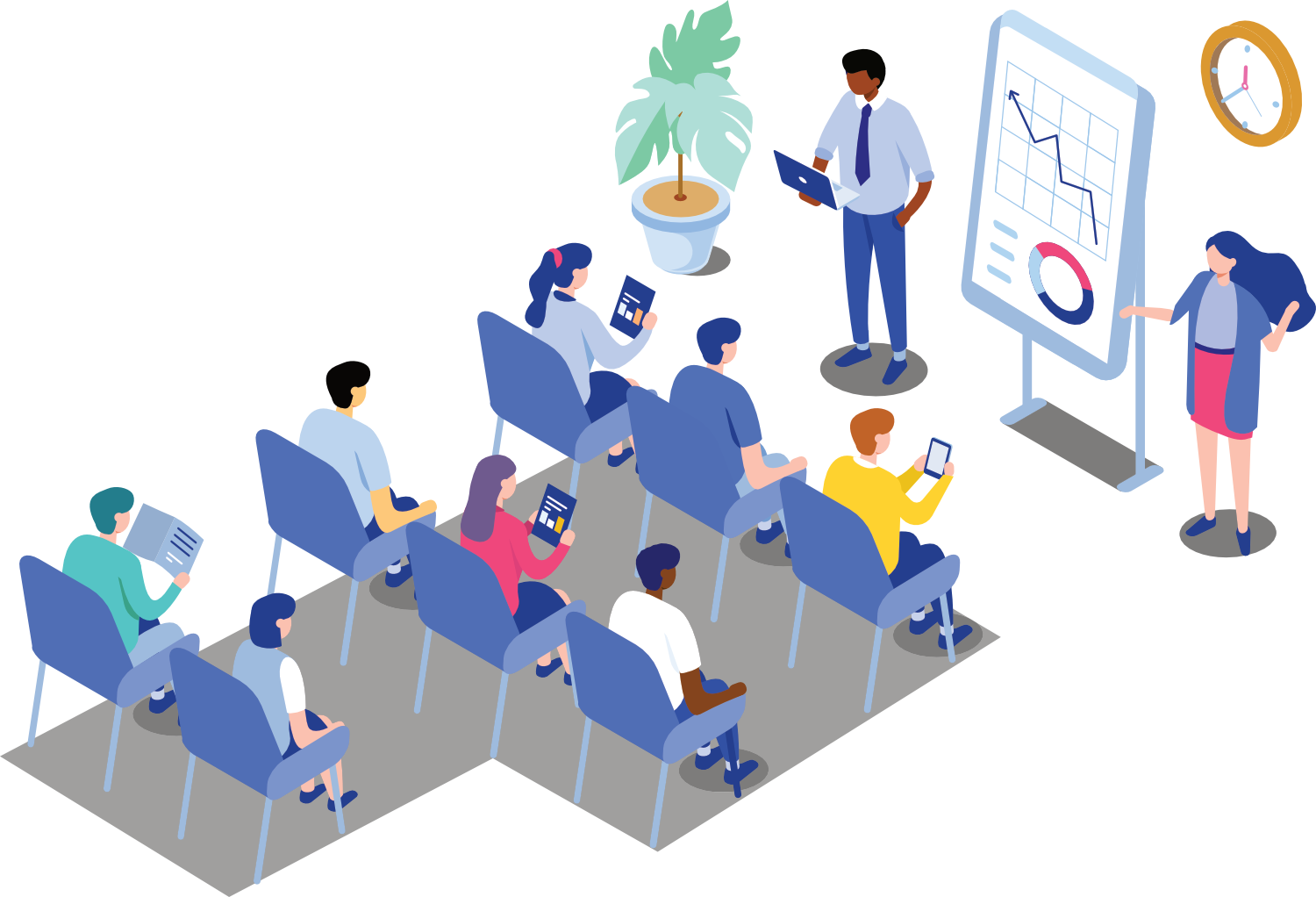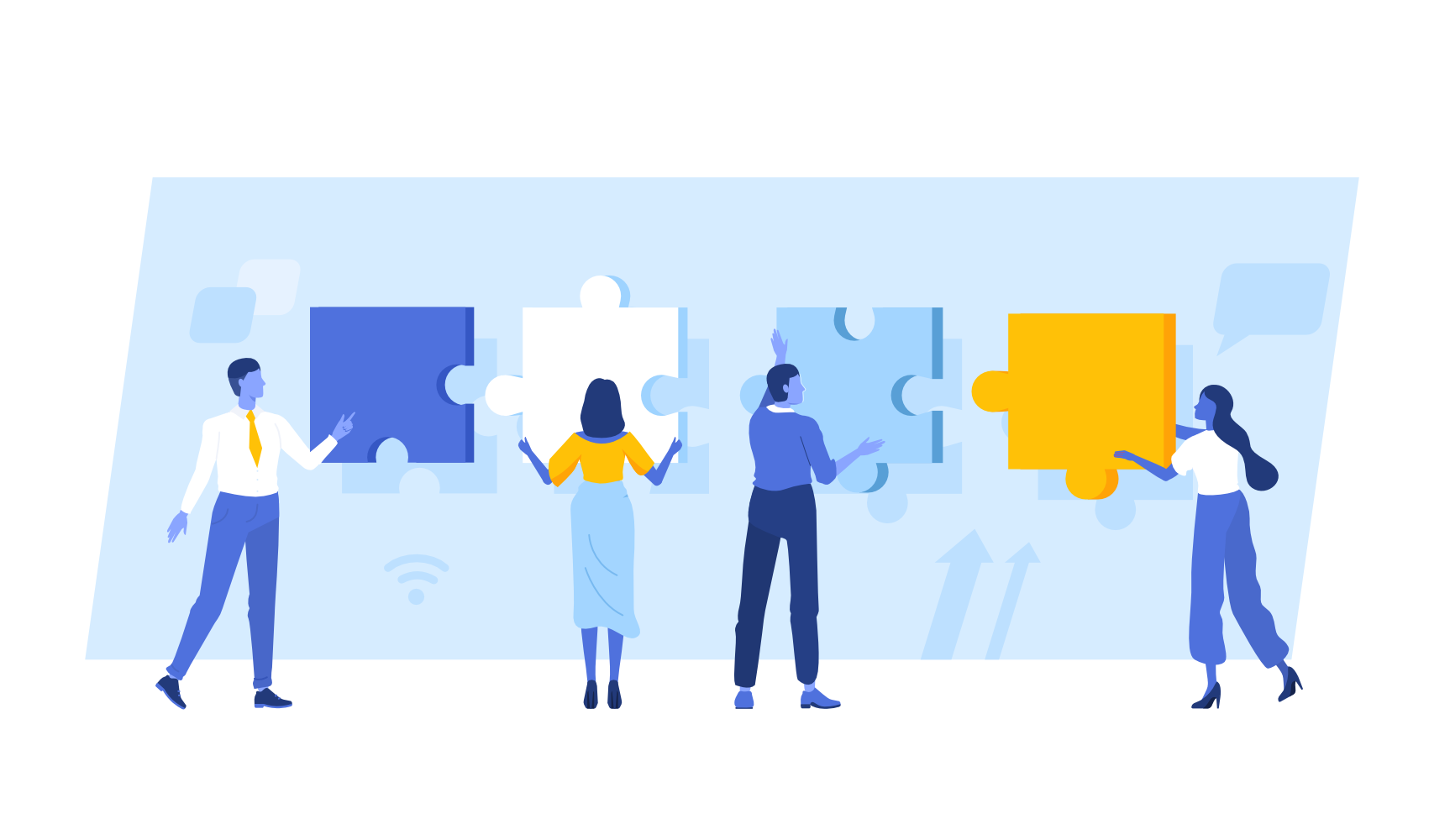The Science
Why It Works
Why Understanding Self Is Key
Learning the ‘soft skills’ of life, matters.
The results are in from a great variety of research projects and test cases. Soft Skills may matter as much as, if not more than, Hard Skills when it comes to success at school and life.
Hard skills are most things that are tested in standardized tests and the SAT.
Soft skills are extremely important even if not measured in standardized tests. Success in life and schools is primarily a result of developing multiple aspects of oneself, developing both hard skills and soft skills.
Higher Grades
Fewer Absences
Fewer Disciplinary Problems
Higher High School Graduation rates
Higher College Attendance rates
Overall higher educational attainment
Higher income and employment
Better health outcomes
Avoidance of criminal behaviors
Focusing on soft skills may have more impact than focusing on test scores
College completion, persistence, is more heavily affected by soft skills
Employers see critically needed soft skills often lacking
Soft skills needed for College readiness
Soft skills help disadvantaged students close the gap
The Science Behind Our Process
Why We Use the Right Tool for the Right Situation
There are dozens of great psychological models and tools. The key is to choose the correct one for your needs. Most assessments use just a single psychological “tool” to help students.
We provide an entire toolkit so that teachers and students can always be using the best tool for the situation.
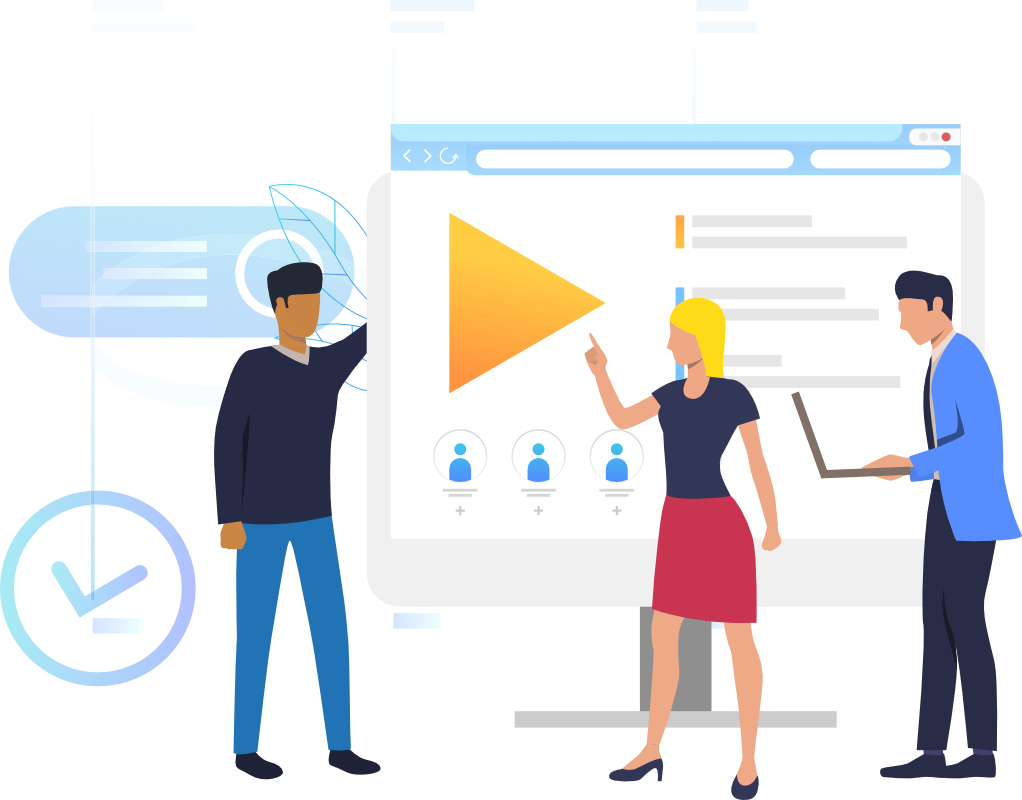
Activities As An Assessment
Instead of asking about “symptoms”, a common psychological approach, our process of assessment activities focuses on best-fit methodologies and working for verification.
The game-like activities are not just helping the student determine their best-fit, they are also incidentally educating the student about the psychological models and how they apply to life. The student is getting more out of the process with activities than with asking “symptom” questions.
The Need For Verification
The best-fit and verification process solves many of the problems with inaccurate assessments.
A best-fit and verification process is not only a necessary ethical requirement for many assessments – it is also a great idea.
We believe in providing the most amazing best-fit verification process to as many people as possible at the most affordable price.

Behavior & Core Self
One reason to avoid asking questions about someone’s behavior is that behavior is often a symptom of a lot more than a student’s core self.
Using the pyramid to the right as an example, your behavior starts with your underlying psychological types and patterns. The final resulting behavior that everyone sees gets modified by a variety of factors such as how you were raised, the schools you went to, your friends preferences, your experiences in life, the culture you were raised in and expectations at work. This means that questions about observed behavior may not help understand your underlying core self.
Another example of how behavior and core self is different comes from Linda Beren’s Core Self model. You have a Core Self, at the center, and then layered on top of that you have Developed Self, as you adapted and grew with influences from family, parents and school. Then you also have a Contextual Self, and this is what most people see from the outside, and this is where you might act differently when in front of your parents versus in front of your friends.
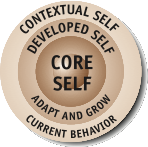
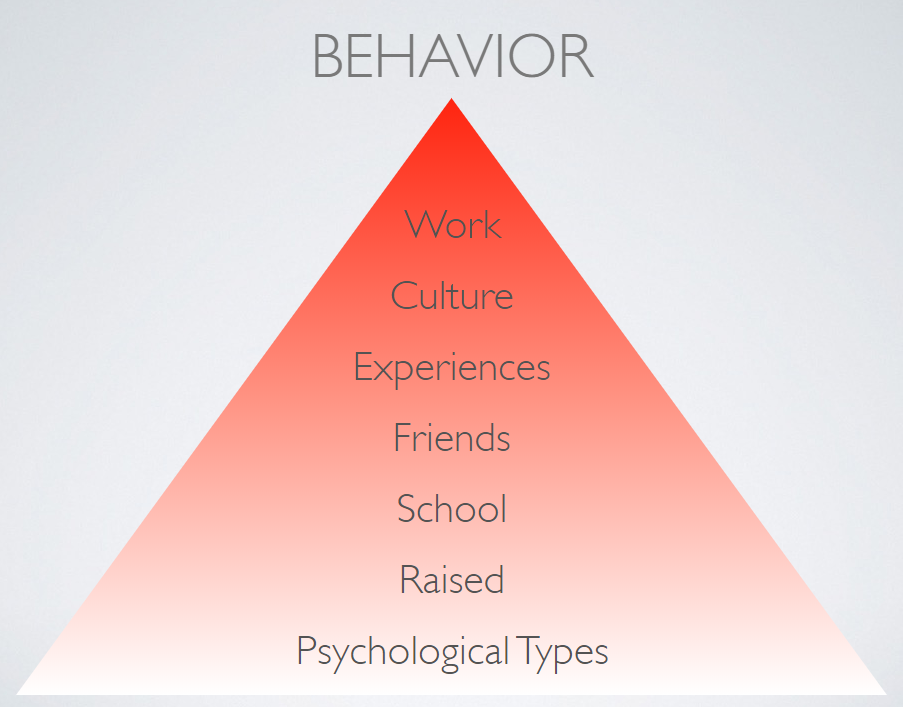
Benefits Of Personalization
Throughout our activities and reports we use the student’s name and preferred gender pronouns.
This way students are not reading generic text, but instead text that is more personalized to them.
Our research has shown that personalization significantly helps accuracy for a student determining what is NOT a “good fit”.
Personalization makes the contrast between “me” and “not me” that much starker. A good fit feels more true and a so-so fit is that extra bit less compelling when they refer to the student by name. This results in greater accuracy and more self-awareness.
Engagement Matters
The more we can engage a student in the best-fit process, from assessment through verification. The better the results.
The more a student is interested in doing engaging “gaming” activities about themselves, most people’s “favorite topic”, the higher the accuracy.
We use diverse game-like activities because it helps create surprise and curiosity in the students. They ask, “What will come next?” As a result, they spend more time doing self-awareness work.
Our research has shown that if we use just one question format or activity type, students will go through an assessment more quickly, but end up with less accurate results. By using different activities that engage the student differently, the students get better and more accurate results.
Constantly Improving Accuracy
We use modern assessment and statistical techniques to maximize the accuracy of our best-fit wizards. For example, each psychological model is validated for you multiple times, then the different models are compared against each other for accuracy
It is kind of like “triangulation” for someone’s personality.
Different from most standard assessments, we don’t stop after the assessment is done. We ask the student to do verification. We continually gather more data from each student to improve the accuracy of that student’s results.
Additionally, our incredible database of thousands of people allows us to continually refine the accuracy of our best-fit predictions.

The Assessment Environment
The environment around a student when they are doing an assessment can skew results. If a student is highly stressed on a particular day, that can skew the results.
That is one reason we allow students to do activities anywhere or anytime they feel comfortable and have an internet connected device. The student can find the environment and situation that helps them focus on their self-awareness.
We also encourage students to go back and do the assessment and activities again. There is no correct answer except the one that fits the student best. If a student feels like they have changed, great, they can go through the process again. It is a journey of self-discovery.
Increasing Self-Awareness
Different students learn best in different modalities. We make sure to use a variety of techniques, both written, visual, and video to help students understand themselves and the psychological concepts.
We use icons throughout our software and our reports to help students easily navigate to the element that will help them most to understand a topic and themselves.
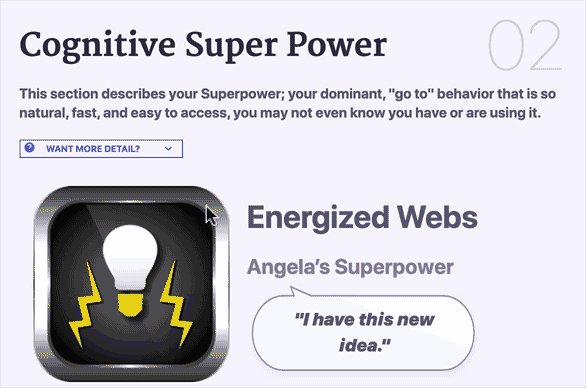

Multiple Methods
And Models
Different psychological, educational, sociological, economic, and other models are best used in different situations. They each have different advantages.
There are significant statistical and scientific advantages to using multiple models and methods.
Being over-committed to just one model or method can hurt a student’s opportunities to grow if the wrong model is being used in the wrong way.
Accuracy Matters
No assessment is 100% accurate. All assessments have inaccuracies.
This can often come from differences in:
where we are when we take the assessment.
time of day when we start
mood while we complete the assessment.
awareness of the student about themselves.
This creates a need for a “best-fit” process that goes beyond any simple assessment, and even the best assessments benefit from the best-fit process that includes verification.

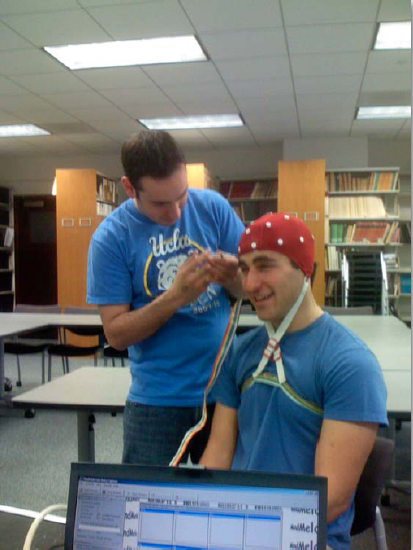
People Patterns
Social psychology and other “people” sciences such as sociology, anthropology, economics, politics, biology and related fields have a rich history of research into why people do what they do and the patterns of thought and behavior that they form. Patterns in groups and patterns in individual thought.
From Hippocrates, Aristotle and Plato with various temperaments to modern behavioral economics and neuroscience, it is a never-ending quest to improve and leverage our understanding.
One example of the multitude of recent research, Dario Nardi, PhD, has conducted research, utilizing insights from real-time EEG technology to validate Jungian Psychological Types.
The work from neuroscience offers evidence consistent with the existence of the Extraversion-Introversion polarity or dichotomous dimension.
Traits & Types
The world of psychology has some proponents for trait-based models and also proponents for type-based models. We find value in both. It is about using the right model for the right situation.
With the example of left and right handedness we can see how trait and type models play out.
Trait-model: A person is rated from 1-100 on their left and right hand ability, and our example person is 87-Left and 65-Right.
Type-model: While obviously a person uses both hands for many tasks it is useful to know that a person is “left-handed”.
Both systems are useful. The trait-model clearly adds quantitative information, which can be useful for all kinds of things, like ranking people. And what most students need to know day to day, is to be self-aware enough to say “I am left-handed” from the type-model.
Diversity Awareness
We see that part of a student’s self-awareness is also how they are different from and similar to other people.
This is part of the power of Type systems. It creates a powerful shortcut for a student to become aware of and leverage the differences between themselves and others.
Often, just the simple paradigm shift to realizing that some people prefer extraversion and others introversion can have profound effects on that students effectiveness in working with others and managing their own energy.
Research Applied
“Actually Doing Things”
Too often psychology is used to provide an insight that is then never put into use. We are focused on “Doing things with insight”.
We want to help people build good habits and change behavior with the goal of making their lives better. If people are not making positive changes in their lives, then we are not doing our jobs right.
Different models have advantages in different situations and have different applications. We want to leverage the right model for each situation to make the most improvement for that student.
Day to Day Benefits
One of our key goals is helping students get benefits from self-awareness in their day to day life.
That means we spend a lot of extra time on how we can advise students and staff with practical advice that applies a psychological model to a problem that is useful in solving.
We try to help answer the question, “What do I do now?”
We encourage students and staff to do activities that help them make behavior changes based on key psychological insights into who they are.
For examples, look to our Mentoring and Development Report
Individual Refinement
Part of the process each student goes through is refining the different models and patterns down to what is most uniquely them. Part of that is going through the reports and highlighting which statements are most them and which, because of their uniqueness, don’t apply.
Each student is refining their own unique self-awareness of what suggestions work for them. What kinds of suggestions don’t work. For example, figuring out that for three things that likely matter, one of them matters way more for them personally.
Collaborative Research

We work closely with other researchers and experts from many different disciplines.
We are all better by sharing knowledge and helping others’ research.
We embrace the diversity of knowledge and research being done in some many different areas. We are constantly working to improve our tools, process and product, and so welcome feedback. Each new bit of knowledge gained is another opportunity to make someone’s experience and life better.
If a researcher finds a better way to be helping people, shouldn’t we all be collaborating to leverage that?
Meet The Authors
We scour the world and different fields of science to find the best of psychology, education, sociology, counseling and other behavioral sciences to find what will work best for students and staff.
Our experts have spent years becoming the best in their field of expertise, often spending decades refining their research and testing it in the real world. You can count on proven results.
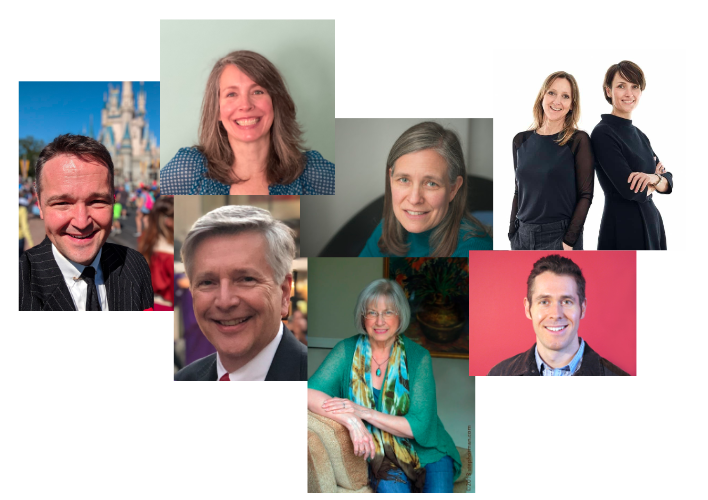
Self-Aware Student is
Pay-What-You-Can
Get started at a fee that fits your school best.
